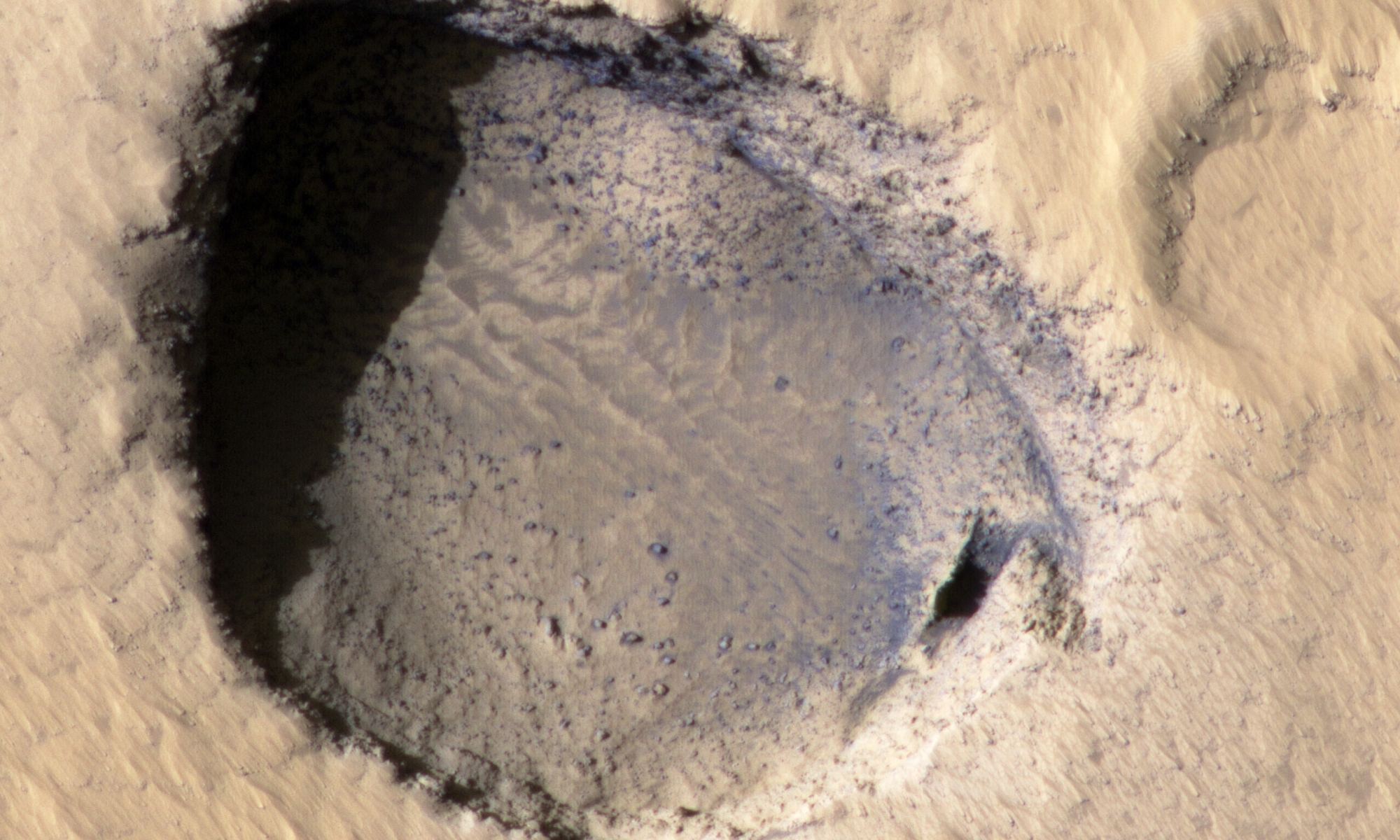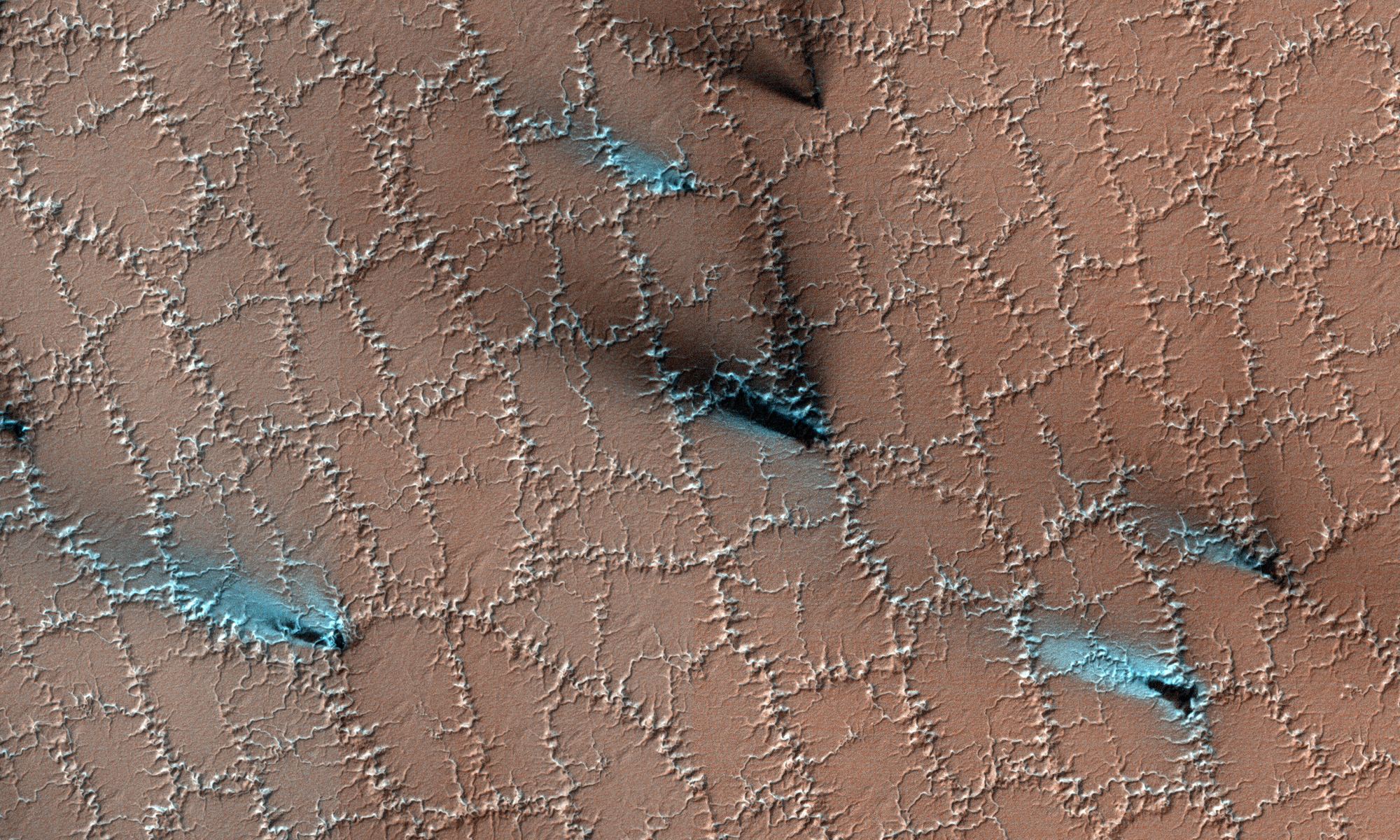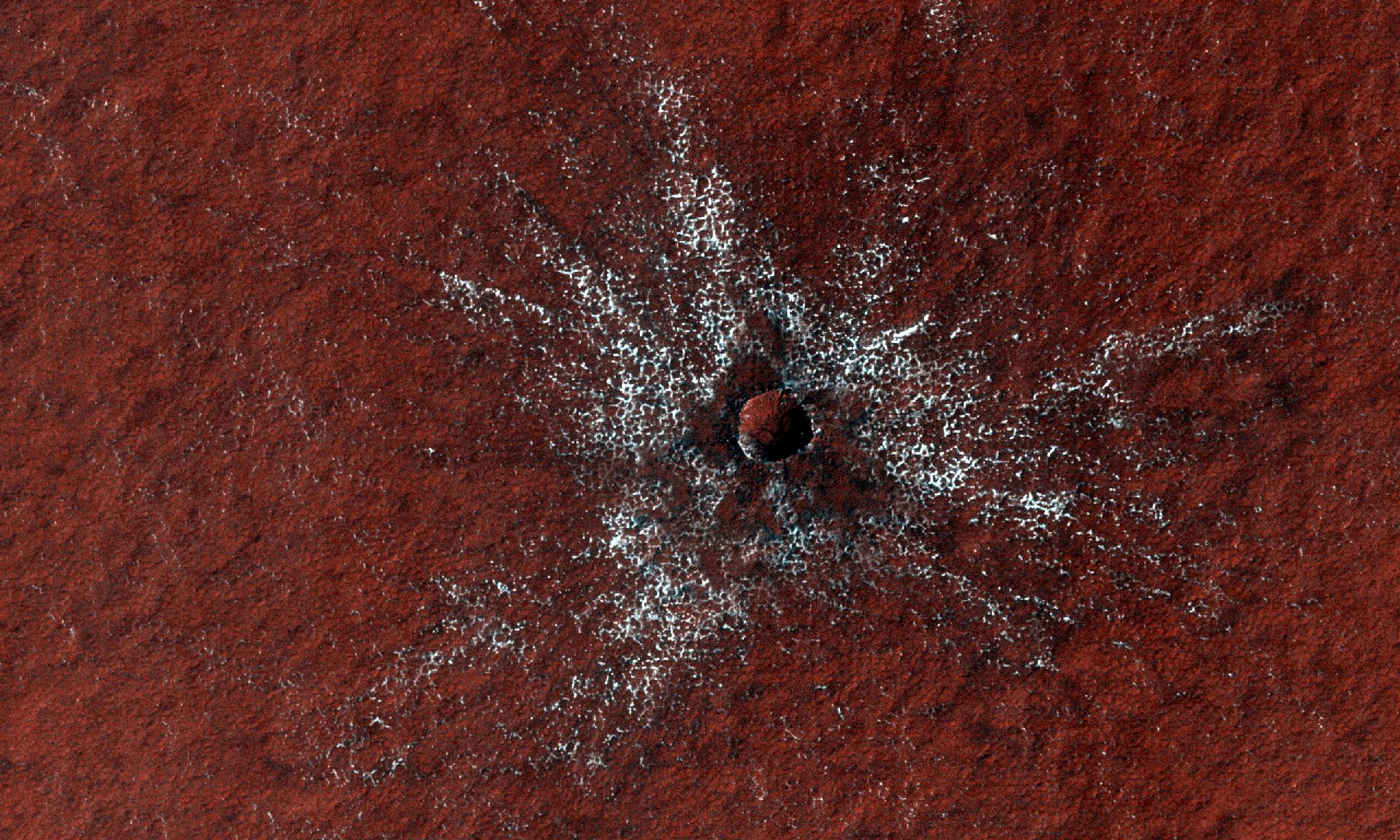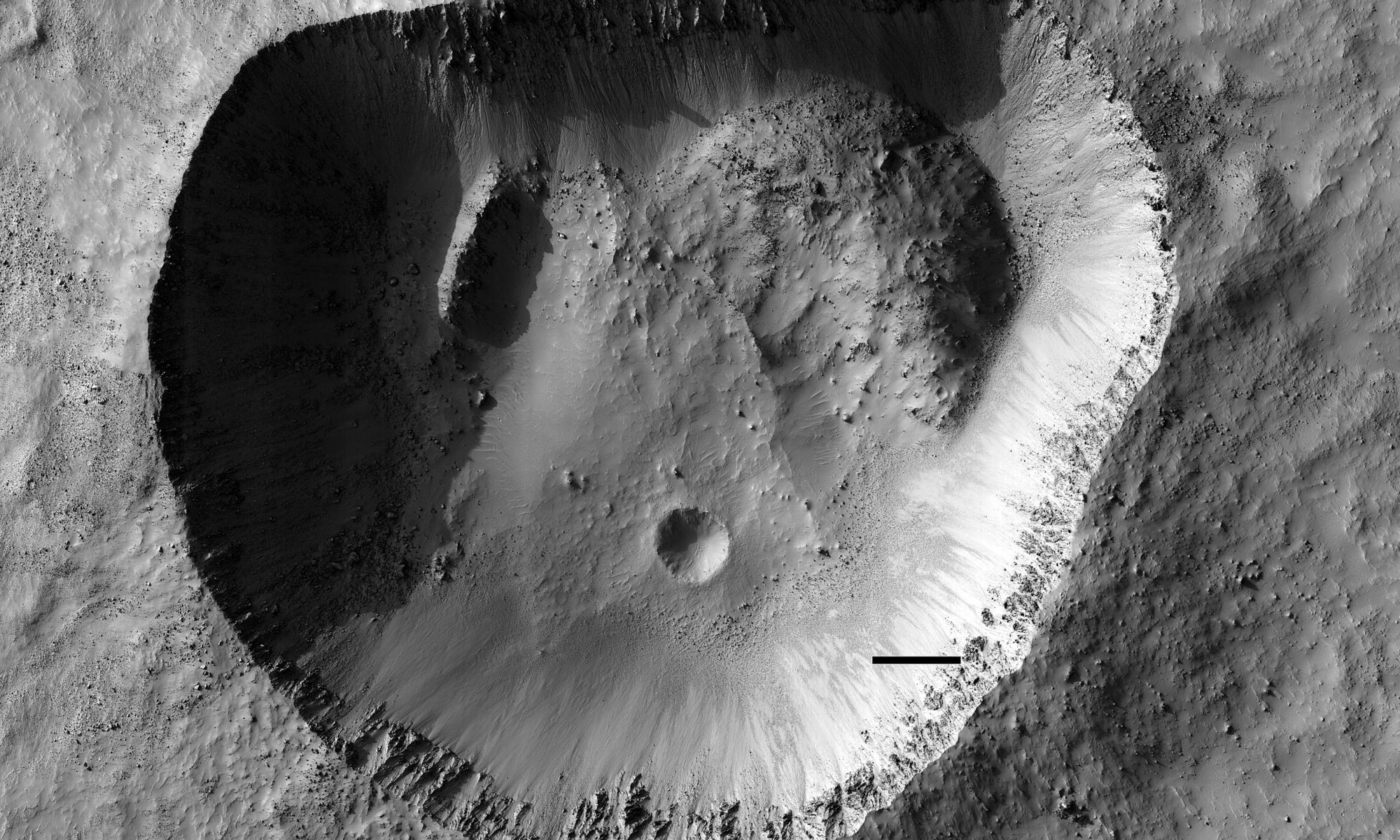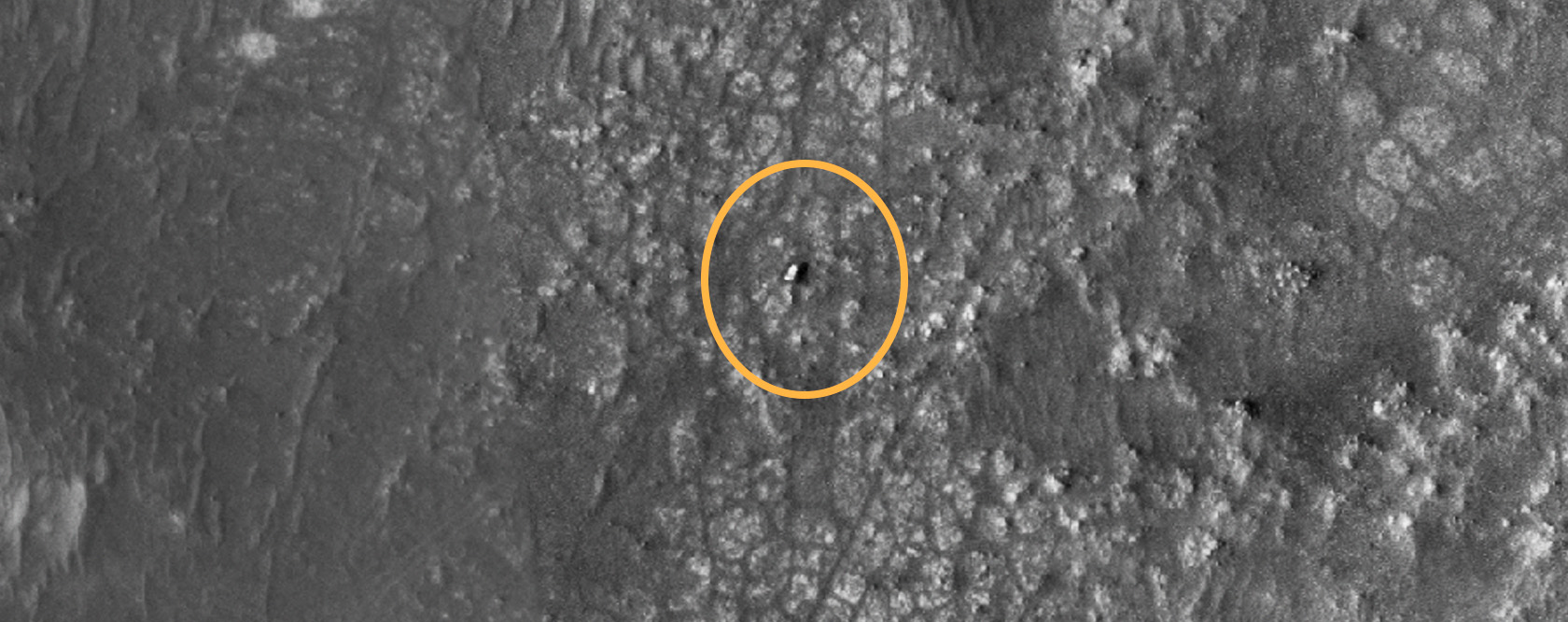Pit craters are found on solid bodies throughout our Solar System, including Earth, Venus, the Moon, and Mars. These craters – which are not formed by impacts — can be indications of underground lava tubes, which are created when the top of a stream of molten rock solidifies and the lava inside drains away, leaving a hollow tube of rock. If a portion of the roof of the tube is unsupported, parts of it may fall in, making a hole or a pit along the lava tube’s path.
Continue reading “The Tharsis Region of Mars is Peppered With These Strange Pit Craters. Now They’ve Been Found Elsewhere”The Tharsis Region of Mars is Peppered With These Strange Pit Craters. Now They’ve Been Found Elsewhere
